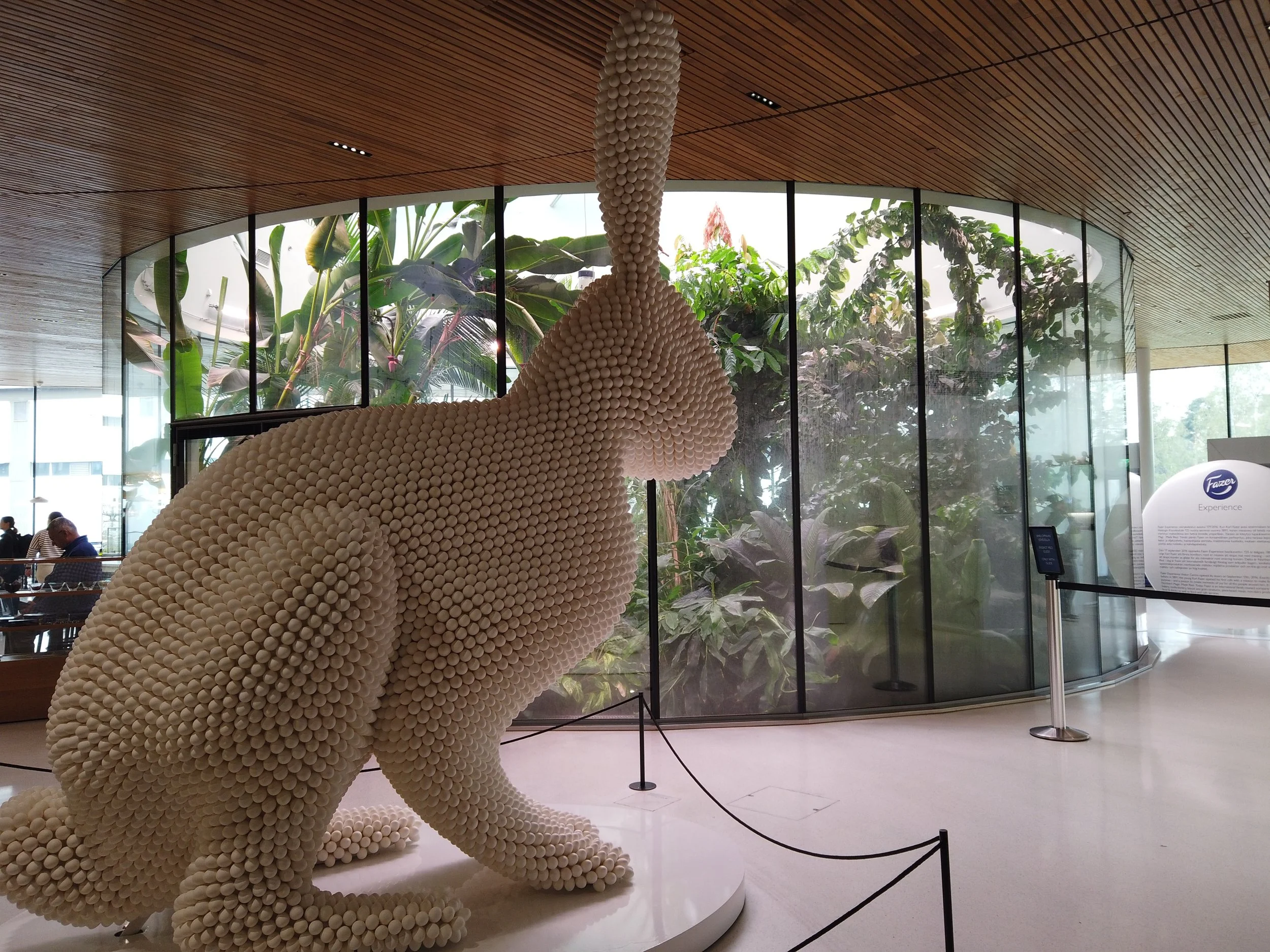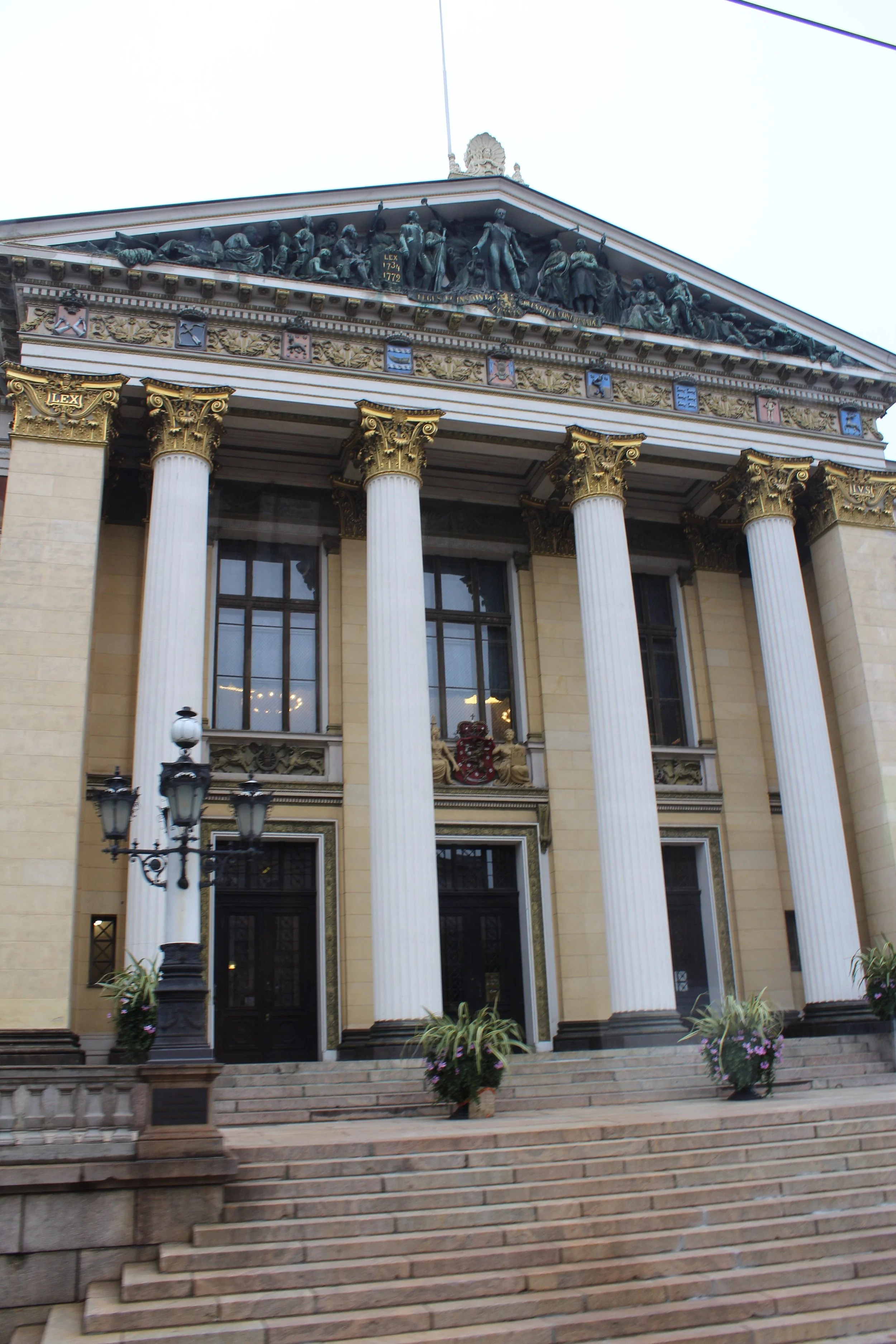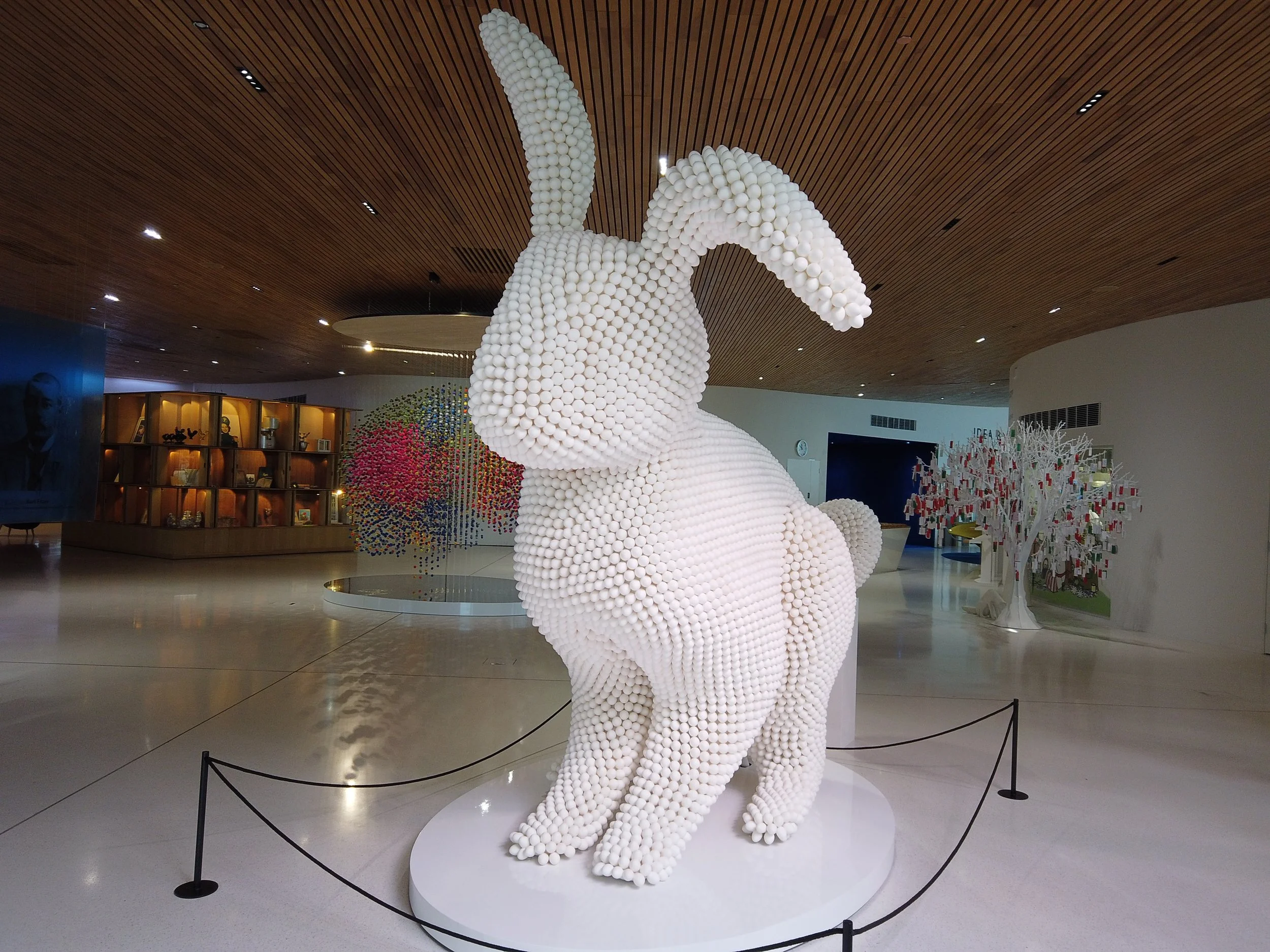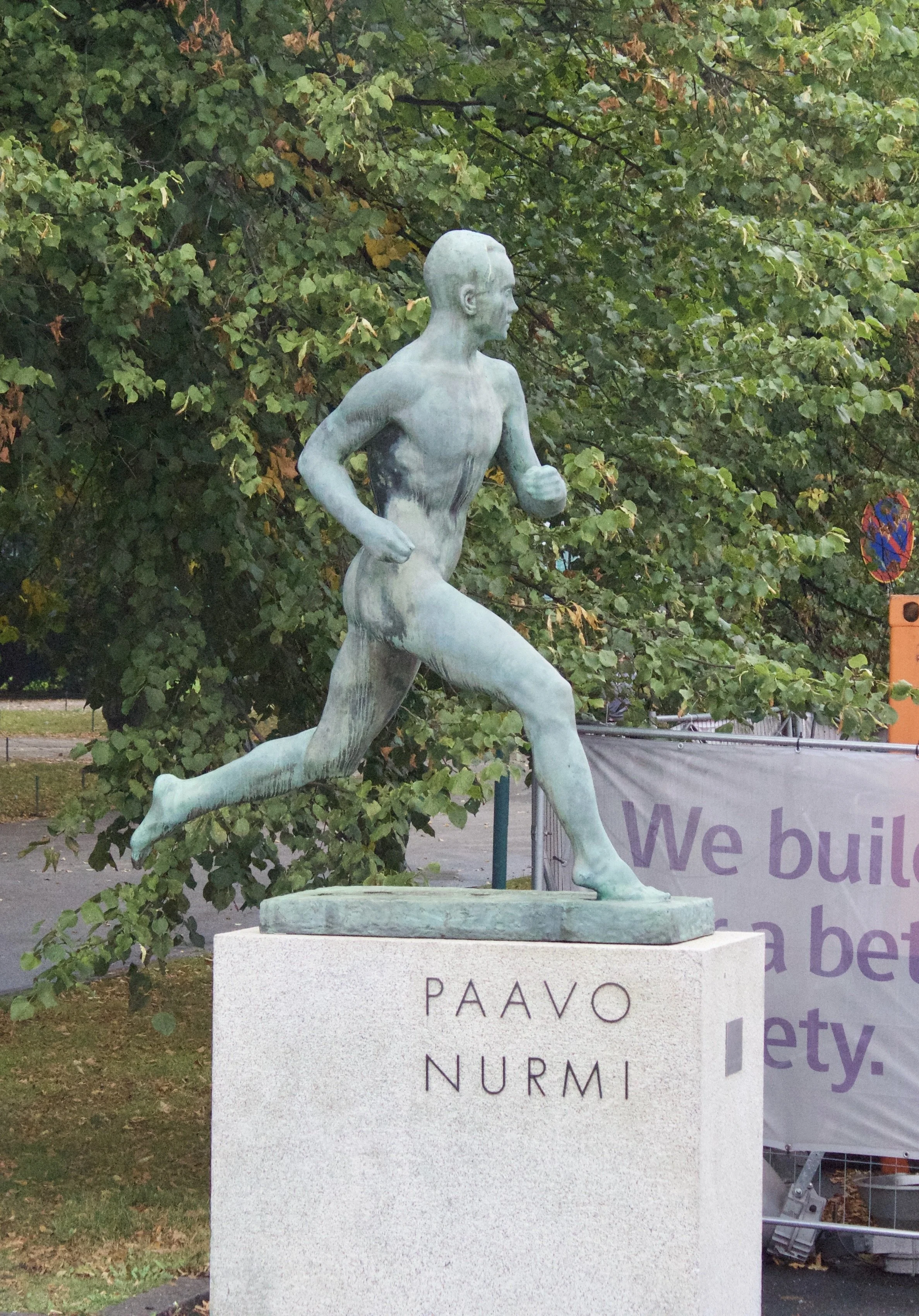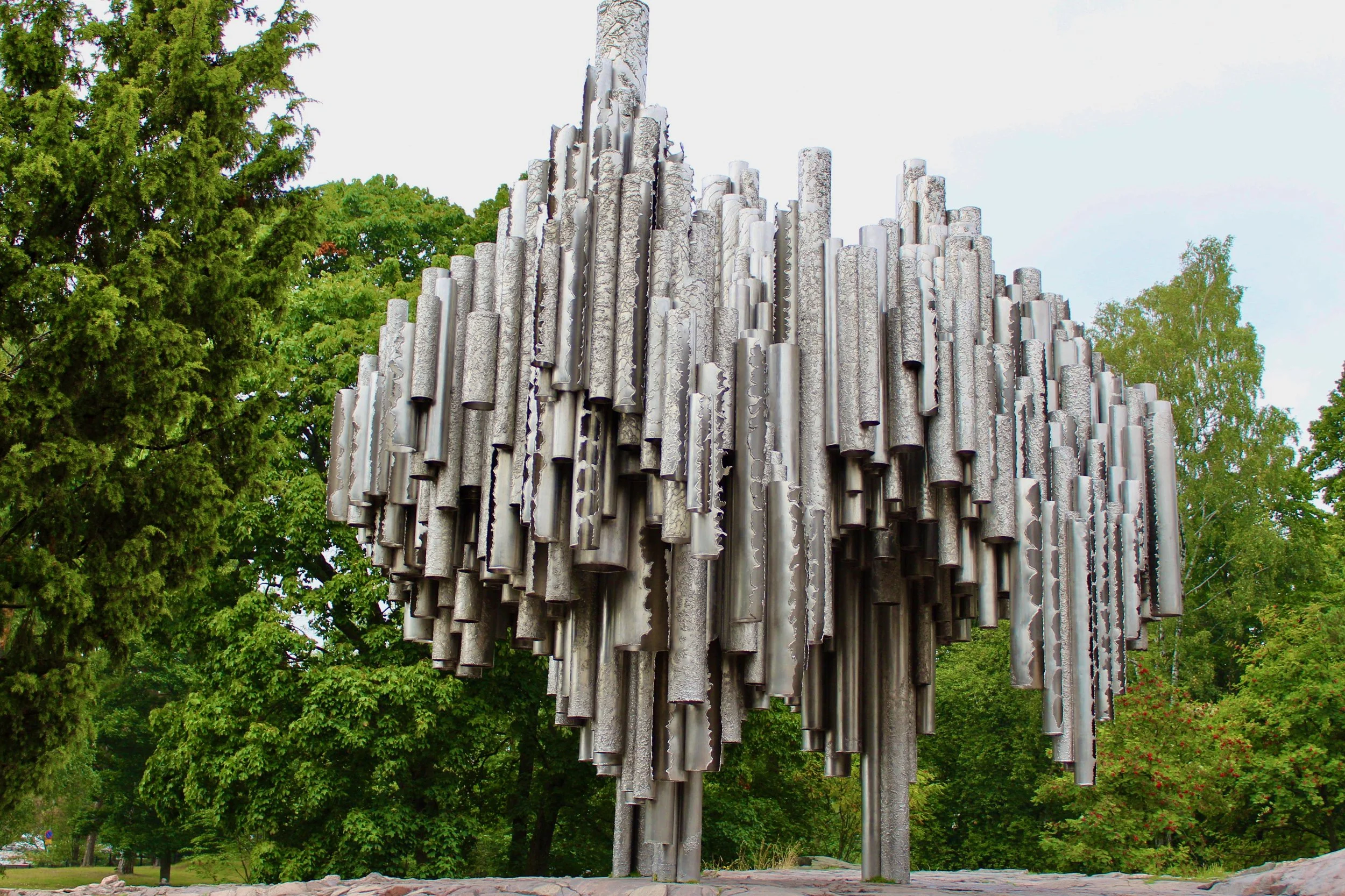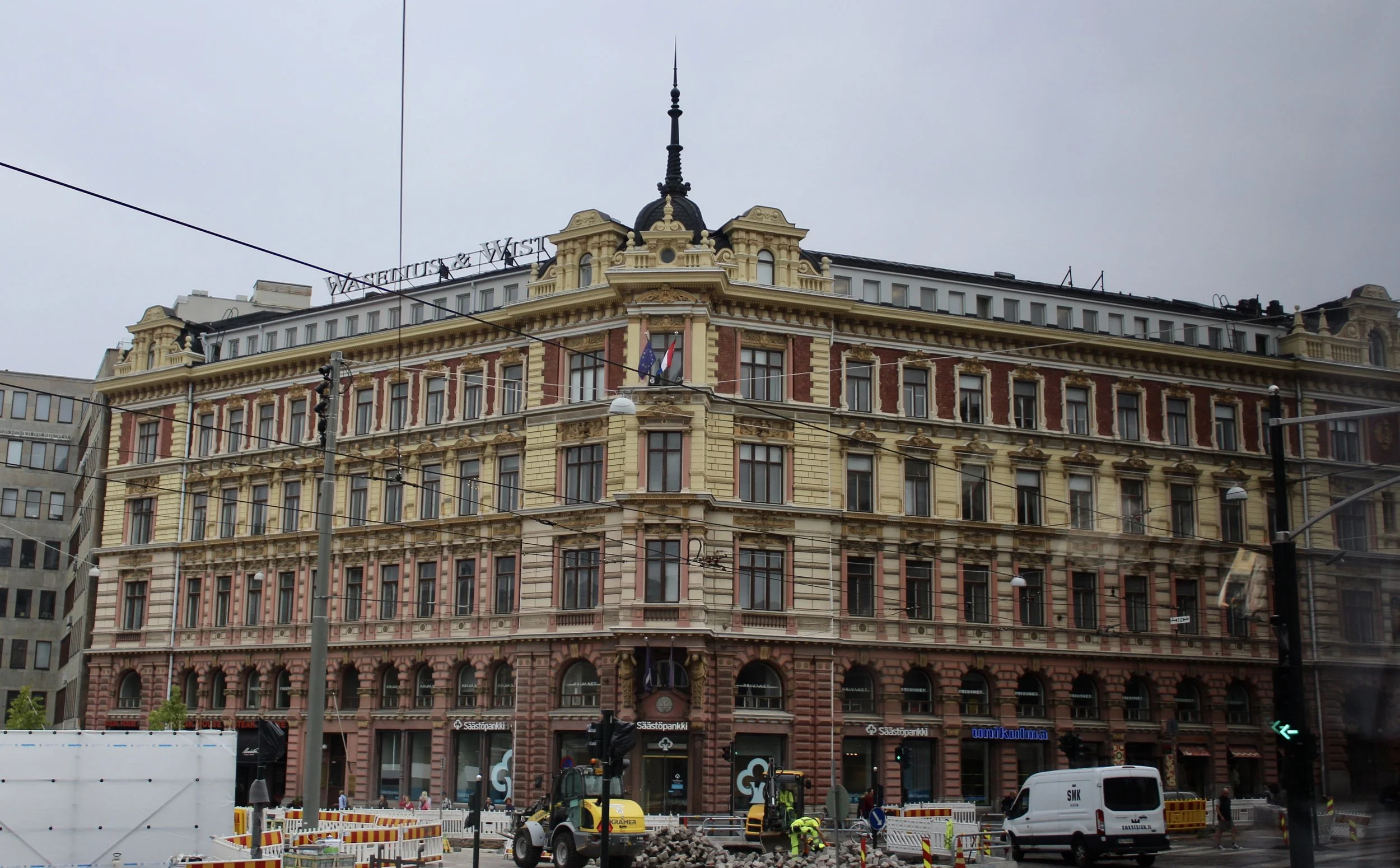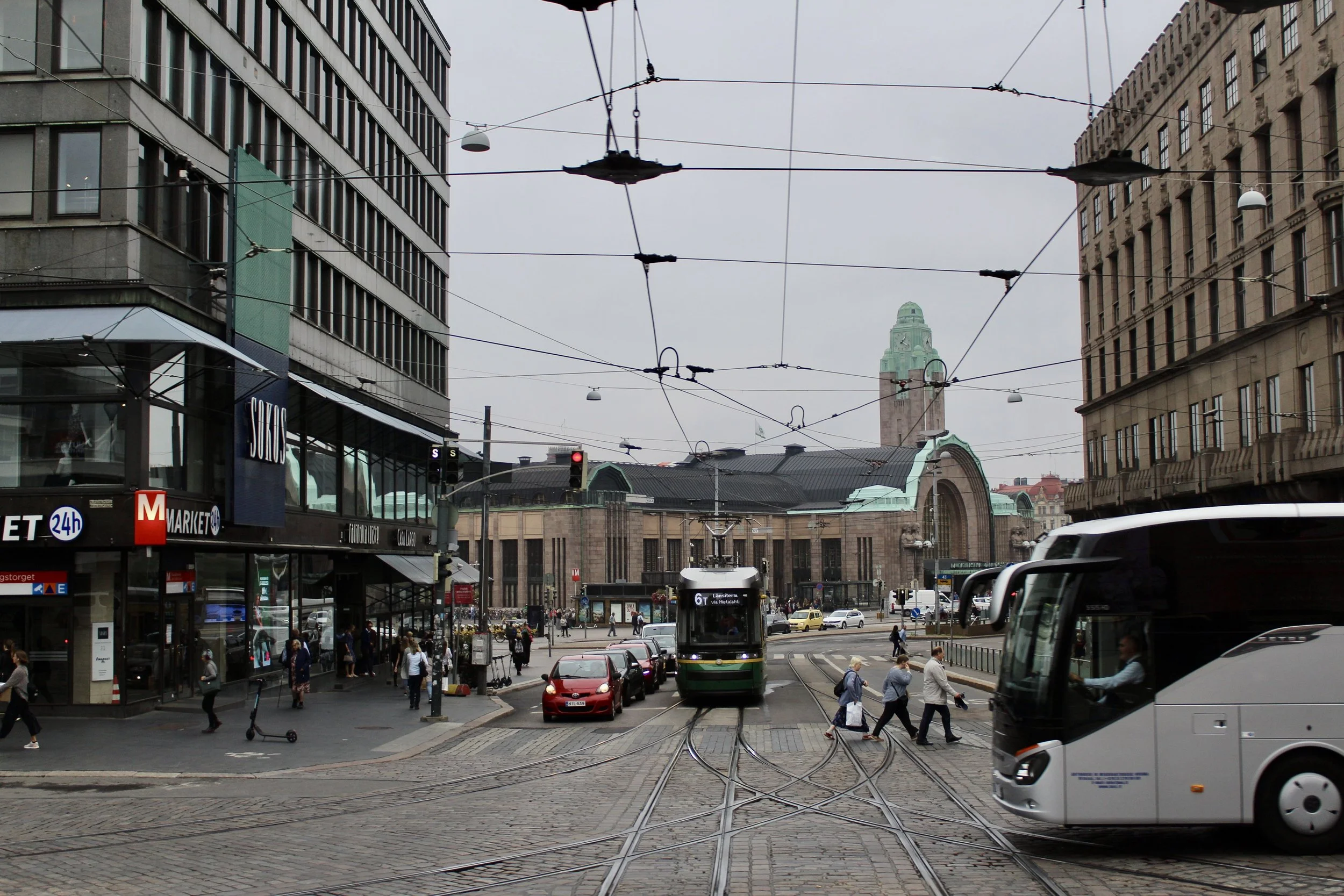Helsinki Finland
We arrived in Helsinki on a gray and wet morning. The port itself is nothing exciting to look at, though you can see a ferris wheel right on the waterfront as the ship pulls in. We got off the boat and boarded a tour bus, and our guide immediately started sharing details about Finland and Helsinki as we made our way through the city.
Even before we reached our first official stop, there was plenty to notice. Helsinki feels small and intimate, with wide streets and a calm pace. We passed several islands as we drove, including one with a white house and a bright red roof sitting by itself near the shore. The guide pointed it out and mentioned how common it is for Finns to have cottages or saunas near the water.
A little farther along, we passed Löyly, one of Helsinki’s popular public saunas. It sits right on the shoreline and is built almost entirely out of stacked wooden slats, which gives it a stepped, modern look even from the road.
We also drove past long stretches of trees. Finland is heavily forested, and even inside the capital you see tall pines and birches lining the roads. The guide talked about how more than seventy percent of the country is covered in forest, and looking out the bus window, it felt true.
About Helsinki
Helsinki is one of the newer capitals in Europe. It was founded in the fifteen hundreds and later redesigned after a major fire in the eighteen hundreds. Much of the city’s clean, symmetrical look comes from the period when Finland was under Russian rule. Senate Square and the government district are the best examples of that neoclassical layout.
Finland is known for its strong education system, its deep connection to nature, and a cultural preference for quiet and personal space. More than seventy percent of the country is covered in forest, and Finland has close to two hundred thousand lakes. As we drove out toward Fazer, the steady stretches of pines and birches made that number easy to believe.
Saunas are also a major part of Finnish life. The guide mentioned there are over three million of them in a country of five and a half million people. They appear in homes, apartments, offices, and even some public buildings.
Helsinki’s design reputation shows up in small ways. Tram stops, squares, and simple buildings are laid out intentionally. The city’s shoreline setting keeps water views close by, giving many neighborhoods a calm, open feel even on foggy mornings.
Helsinki Cathedral (Helsingin tuomiokirkko)
Our first official stop was Helsinki Cathedral. This bright white landmark stands at the top of Senate Square and is one of the city’s most recognizable buildings. The tall green dome and wide staircase make it easy to find from almost any angle.
Inside, the cathedral stays simple. Light walls, open space, and tall windows make the interior feel bright and uncluttered. It matches the straightforward style of Finnish Lutheran churches, and even a short visit gives you a clear sense of the building’s personality.
After our stop here, we headed out of the city and toward our sweet destination of the day.
Fazer Experience Visitor Centre
Fazer Experience Visitor Centre
Our next main stop was outside the city at the Fazer Experience Visitor Centre. We passed thick forest on the drive, and the guide talked about how normal it is for Finns to live close to nature even near the capital.
The Fazer Experience is part museum, part tasting center, part café, and part behind the scenes look at Finland’s most famous chocolate and candy brand. The café sits near the entrance and sells pastries, chocolates, and drinks, so many people stop there before or after the tour.
One of the first displays is a detailed chocolate village encased in a clear dome. The houses, trees, and small figures are all made of chocolate, and it looks like a miniature town frozen in place. When you walk in, you also see a huge sculpture of a rabbit made entirely out of Mignon eggs. It stands on its own platform and is covered from head to tail in smooth white shells. These were the features they had during my visit, though Fazer rotates its exhibits every so often.
Fazer is especially known for their chocolate filled Mignon eggs. The guide explained that they remove the top of a real eggshell so it can be emptied without cracking, then fill it with almond hazelnut nougat chocolate.
Fazer tasting area
The tasting area is where most people linger. Stations are stocked with chocolates and candies you can sample freely. The shop at the end is tidy, with boxed chocolates and limited edition items. One of the best parts was the gift bag they handed out at the end, filled with different Fazer treats.
Paavo Nurmi Statue
Driving Back Toward the City
After leaving Fazer, we drove back toward central Helsinki. The road cut through more tall pines and birches before the city reappeared around us.
One of the first major landmarks we passed was Parliament House, a massive stone building lined with tall columns and a wide staircase across the front. It looks more like a classical monument than a modern government office.
Not long after that we passed Helsinki Central Station, known for its green copper roof, tall clock tower, and blend of classic and Art Nouveau design.
As we continued toward the water, the guide pointed out a few older buildings with ornate facades. They looked different from the clean Scandinavian style that Helsinki is usually known for but gave the center a lot of character.
Somewhere on the drive we passed a statue of Paavo Nurmi, Finland’s legendary long-distance runner. He is one of the country’s most celebrated athletes, known for winning nine Olympic gold medals. The statue has been moved a few times over the years, but it still appears along several routes through the city.
Sibelius Monument
Sibelius Monument (Sibelius-monumentti)
Our final stop was the Sibelius Monument. It sits in a quiet park and was built to honor Jean Sibelius, the composer whose work became tied to Finland’s national identity.
The monument is made from more than six hundred metal pipes welded together in a wave like formation. Up close you can see the textures and the way the openings frame the sky. Walking around it changes the shape completely — one side feels dense and solid, while the other opens up with light shining through the tubes.
Next to it is a traditional bronze portrait of Sibelius’ face resting on a stone. The contrast between the modern metal pipes and the classical portrait feels intentional.
From there, we made our way back toward the port where we were greeted with the afternoon ferries and locals moving about their day.
Other Things to See
If you have more time in Helsinki, here are a few popular and easy to reach spots:
• Market Square — waterfront food stalls and ferries to nearby islands
• Temppeliaukio Rock Church — a church carved directly into solid rock
• Esplanade Park — a long green strip lined with cafés and shops
• Senate Square — the heart of the neoclassical district and home to Helsinki Cathedral
• Löyly Sauna — a modern wooden sauna complex on the shoreline, open for public sessions
• Suomenlinna Sea Fortress — a UNESCO-listed island reached by ferry; plan about three hours
• Seurasaari Open-Air Museum — historic wooden buildings in a natural park setting
• Korkeasaari Zoo — set on an island, usually a half-day visit with transit
• Design Museum (and nearby galleries) — possible to sample quickly, but worth more time if design interests you
If You Go on Your Own
Helsinki is simple to navigate. Trams cover most of the central area, while buses and the metro reach farther neighborhoods. Ferries connect the city to nearby islands and other Baltic ports like Tallinn and Stockholm.
The city center is very walkable. Senate Square, the waterfront, and the shopping streets sit close together, and English appears often enough on signs that visitors do not struggle.
If you want to explore farther, Suomenlinna is one of the easiest and most popular half day trips.
Getting Around
• Trams cover most of central Helsinki
• Buses and the metro reach outer districts
• Ferries connect islands and neighboring countries
• Walking is easy thanks to wide sidewalks and a clean layout
Tickets can be purchased through the HSL app or at kiosks.

